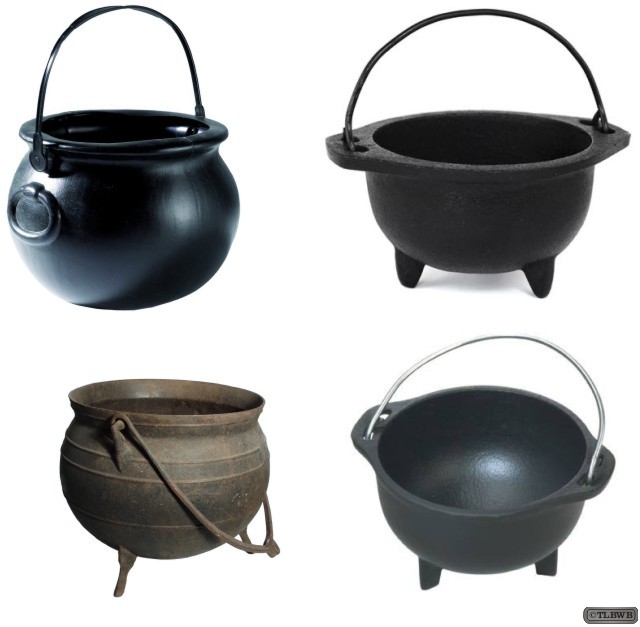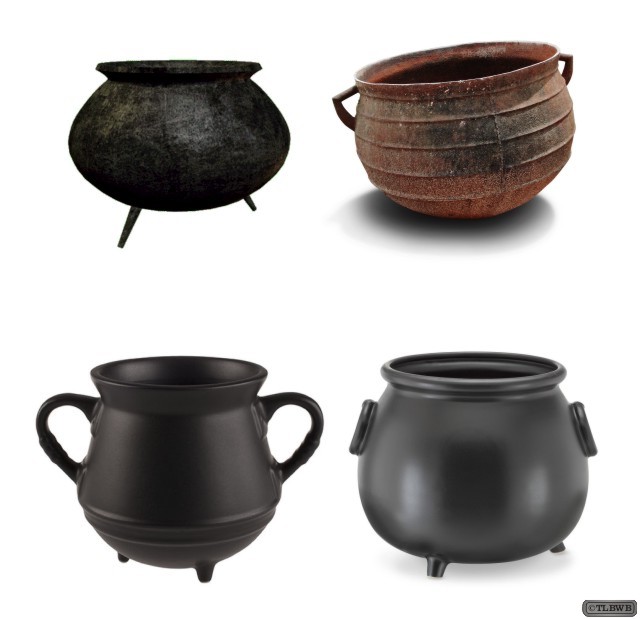A cauldron is a large metal pot for cooking and/or boiling over an open fire, with a large mouth and frequently with an arc-shaped hanger.
Etymology
The word cauldron is first recorded in Middle English as caudroun (13th century). It was borrowed from Old Northern French or Anglo-Norman caudron (Norman-Picard caudron, French chaudron). It represents the phonetical evolution of Vulgar Latin *caldario for Classical Latin caldarium “hot bath”, that derives from cal(i)dus “hot”.
The Norman-French word replaces probably the initial Old English word cetel (German (Koch)Kessel “cauldron”, Dutch (kook)ketel “cauldron”), Middle English chetel. The word kettle comes from the Old Norse variant spelling ketill “cauldron”.
Symbolism and mythology
In some forms of Wicca, incorporating aspects of Celtic mythology, the cauldron is associated with the goddess Cerridwen. Welsh legend also tells of cauldrons that were useful to warring armies. In the second branch of the Mabinogi in the tale of Branwen, Daughter of Llyr, the Pair Dadeni (Cauldron of Rebirth) is a magical cauldron in which dead warriors could be placed and then be returned to life, save that they lacked the power of speech. It was suspected that they lacked souls. These warriors could go back into battle until they were killed again. In Wicca and some other forms of neopagan or pagan belief systems the cauldron is still used in magical practices. Most often a cauldron is made of cast iron and is used to burn loose incense on a charcoal disc, to make black salt (used in banishing rituals), for mixing herbs, or to burn petitions (paper with words of power or wishes written on them). Cauldrons symbolize not only the Goddess but also represent the womb (due to the fact that it holds something) and on an altar it represents earth because it is a working tool. Cauldrons are often sold in New Age or “metaphysical” stores and may have various symbols of power inscribed on them.
The holy grail of Arthurian legend is sometimes referred to as a “cauldron”, although traditionally the grail is thought of as a hand-held cup rather than the large pot that the word “cauldron” usually is used to mean. This may have resulted from the combination of the grail legend with earlier Celtic myths of magical cauldrons.
The Lost Bearded White Brother


Leave a Reply